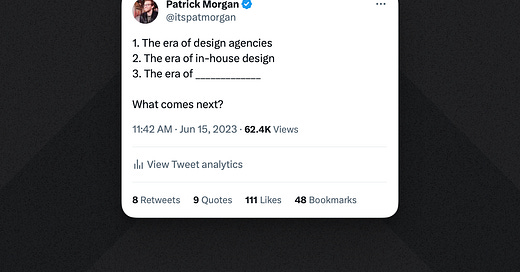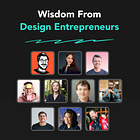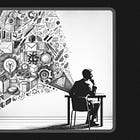The Era of Design Entrepreneurship
Emerging opportunities for entrepreneurial designers in the new age of work
Welcome to Unknown Arts, where we explore the creative power of art and technology. Ready to forge ahead into the unknown? Join the journey!
Wide open spaces
The only thing that’s certain in the software design industry right now is uncertainty.
The traditional agency model is still a tough business, in-house design teams are shrinking, AI is not-so-subtly entering the chat, and people are wondering “What’s next?”
When I asked the community what they thought I got a big response.
The replies ran the gamut from earnest to sarcastic, hopeful to bleak, but I, for one, am optimistic.
What can I say? I’m a positive guy.
I believe designers have a perfect skill set to thrive in the new age of work. It’s just that the new age of work will require us to get creative and adapt.
But hey, that’s our specialty, right? Creativity?
As someone who’s switched careers multiple times, perhaps I’m desensitized to the fear that comes when the existing rulebook gets thrown out. But at least for me, all this greenfield space is exciting.
A slump, not an extinction
Before we talk about new paths, let’s address the status quo.
We may currently be in a slump for traditional agency and in-house design jobs, but they’re not going to zero any time soon.
Good opportunities will exist even if they’re more competitive to land.
So, fear not. You may have to hunker down and bring your A+ game to weather this storm, but the standard employment path will persist. It’s still a viable option if it’s what you want to pursue.
Design entrepreneurs
Now for what gets me excited 🤩.
recently proposed that the next era might be one of design founders. I agree and want to expand on his idea.To me, it’s not just about becoming a founder as we’ve defined it during the last generation of tech (although that is one potential path). Instead, it’s about designers reclaiming our ability to run our own businesses instead of being stuck within someone else’s corporate hierarchy.
It’s about embracing entrepreneurship and using the formidable powers of design to shape a new wave of businesses, large or small.
You aren’t just a designer employed by a business; you are a creative business person whose skill set is design.
That’s a subtle, yet significant shift in mindset that reframed my approach to my career. The best thing about it? There’s no wrong way to go about your entrepreneurial path. Many paths are viable, you just have to choose the one that best aligns with you. As Derek Sivers would put it, you have the power to make your business “anything you want”.
3 emerging approaches
I see three approaches emerging for designers who want to blaze their own trail. These aren’t mutually exclusive but rather represent a starting point. I believe that many new design-founded companies have the opportunity to establish a position in each of the three areas I describe.
1. The service-first approach
What is it?
This is the most direct translation of how design has historically operated: You sell design services to a client for a fee.
What’s happening?
Designers are riffing on the classic agency model but finding creative ways to take advantage of modern forms of leverage to avoid its pitfalls.
Examples
The micro agency: Most commonly represented by DesignJoy.
The micro venture studio: I’m thinking of how Kevin Twohy operates his Twohy Design Works practice.
2. The product-first approach
What is it?
This is probably the path that comes to mind first when people hear the word “founder”: You start by building a product.
What’s happening?
A wave of talented designers who have had the benefit of designing products in-house are venturing out to create their own.
Examples
Physical product company: Charles Burdett of Pip Decks
Product-led design studio: Jesper Kouthoofd of Teenage Engineering
3. The media-first approach
What is it?
This is probably most recognized as a “Creator” style business. It inverts the starting point to focus on media and distribution first then follows up with products and/or services.
What’s happening?
Designers are leveraging their strong media creation skills to create powerful distribution leverage that sets the stage for expansion into other categories.
Examples
Jack Butcher of Visualize Value (via Twitter)
Femke van Schoonhoven of femke.design (via YouTube)
Tommy Geoco of DesignerTom (via TikTok)
And many more!
Final Thoughts
The beauty of a software design skill set is that it equips you well for each of these potential paths.
Will the journey still be challenging? Of course.
But you have great skills and a lot of options and that’s a gift.
I’m excited to see what you make and I’m rooting for you.
Until next time,
Pat 💚
David’s article
If you got a little value from this post, consider subscribing, sharing, or following me on X/Twitter or LinkedIn.








“You aren’t just a designer employed by a business; you are a creative business person whose skill set is design.” Excellent - thank you for this! After starting my own business just over two years ago, this articulates my experience more clearly than I have been able to.